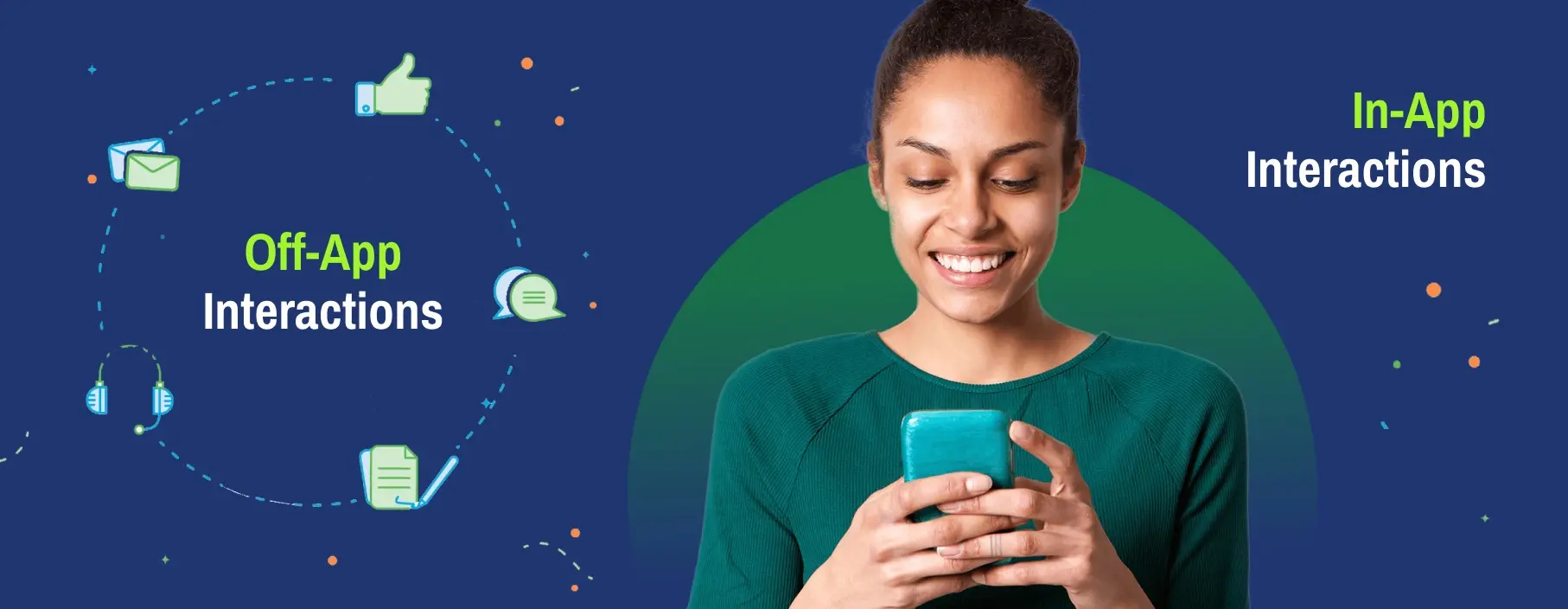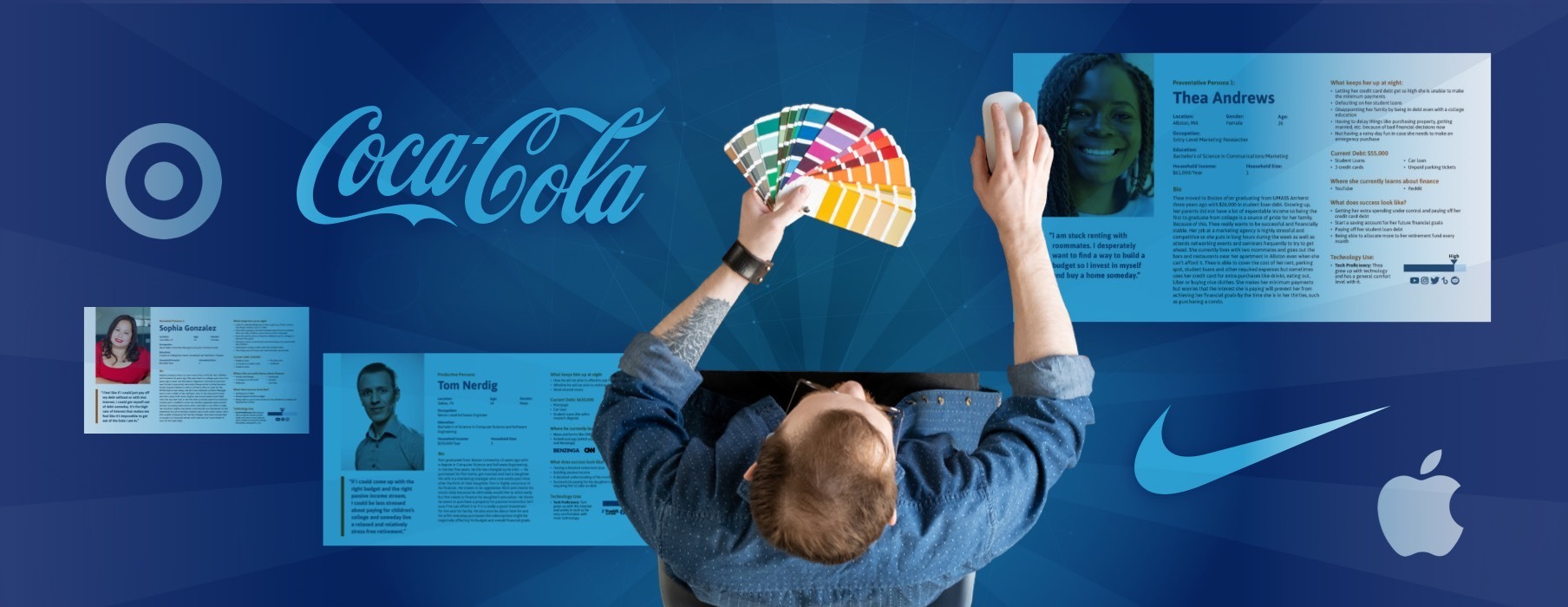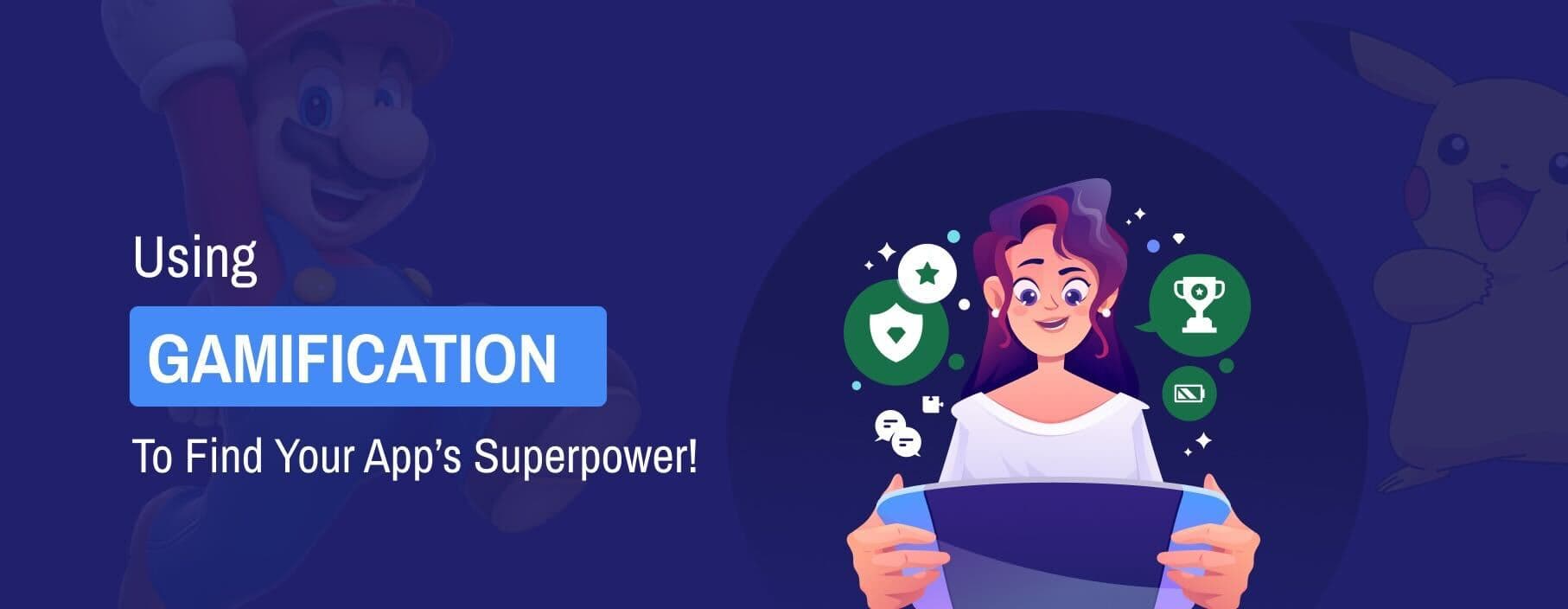Each time you go through a mobile app Design phase, one of the early artifacts of the design is an Experience Map. Think of the Experience Map like a map of the entire app it shows all the different sections (onboarding, the home tab or primary dashboard, profile, settings, etc.). All on one piece of paper, sort of like the world map from your favorite exploration game.
The Experience Map is critical to the design process – it helps the team stay organized and focused next on the interactions within the app as well as highlights key flows through the system. The user experience design process creates wireframes for each screen in the flows of the Experience Map. Teams can then focus on how to make the app easy and engaging and how to elicit the behaviors and actions we’re hoping the users will eventually take, screen by screen, within the Experience Map.
Here at Rocket Farm we spend a lot of time thinking about and designing the experience for users when they are “in-app” – or using the app.
But what’s equally important during the design process is to think about all the other touchpoints that can occur when the user is not using the app – when they are “off-app”. These touchpoints are many – landing pages and app store presence, email and SMS communications to your users, push notifications, etc.
Let’s first dive into the off-app world.
Off-App Interactions
In off-app you proactively want to touch a user with push, email, SMS and any physical places where a user can encounter your brand such as landing pages, website and app store presence.
With 99% of users checking their email every single day email is a powerful tool to give users that gentle push to re-engage with your app and improve your chances of retaining them long-term.
Catch them early
When you are considering email remember the old saying, “the early bird gets the worm”, meaning you should capture the users’ email right at registration! If your app requires your users to sign up before they can use it, consider requesting permission as part of the existing registration flow. Some users may disengage pretty quickly after the initial download so it’s important to take advantage of gathering email information as early as you possibly can!
Verify your users
After a user opts in, consider sending a verification email to activate their account. This step ensures that users have provided a legitimate email address. Verification emails request that a user confirms their action after they’ve provided their email to your company.
By asking for your users’ confirmation, you’re ensuring that they’ve provided a legitimate email address and that they have access to their account. By taking this step, you also reduce the likelihood of adding unverified spam accounts to your list, which can damage your sender reputation.
Verification emails should be simple and to the point. They should contain minimal copy and clearly convey the next step a user should take. You may choose to embed a verification link in the email body or send a code that a user can enter into your mobile app to complete the verification process.
Welcome them
First impressions are everything and users are looking for you to set the tone! Welcome emails offer a unique opportunity for you to make a positive and impactful first impression so it’s important to send the right message. Your welcome email is also the most likely to receive the most attention from subscribers, as open rates for these messages are in the 50-60% range.
Your welcome email should:
1- Acquaint users with your value prop. What will you tell your users is the number one reason why your app is best suited for them? How will it make their life better?
2- Get them started using your app ASAP! Provide all the necessary instructions users need to get started using your product right away if they haven’t already.
Since this email is the first thing they will see from you (aside from the app itself) make sure your brand’s voice, tone, and overall look are present. Your content should reinforce your brand’s personality and visual identity through the words and images you choose to use.
Onboard them
Think of onboarding as the welcome wagon of how to do things within your mobile application. Onboarding serves to give users a brief and clear introduction to your app’s functionality. In your onboarding email or email sequence, you should provide easy-to-follow next steps/actions the user should take in your app.
This type of email is especially useful if users generally experience a learning curve in picking up your product.
Take this opportunity to excite your users and teach them about key features. Make sure to explain the value of your app’s features and the pain points they solve. Explain any complex functionality your app may have or introduce and discuss any features that aren’t immediately obvious in your app’s experience.
It’s good to note that emails also fall into 2 categories, transactional and marketing.
Transactional Emails
Transactional emails are one-to-one emails that contain information that completes a transaction or process the recipient has started with you
Account-Related examples of transactional emails:
- Order Confirmations & Updates
- Delivery Updates
- Returns & Refunds
- Appointment/Reservation Confirmations & Reminders
- Registration
- Cancellation Alerts
- 2FA
- Revenue-related
- Abandoned Cart
- Price Drop
- Back-in-stock
- Product Recommendations
Marketing Emails
Marketing emails are sent to groups of contacts that are prospects or existing customers.
Examples of marketing emails:
- Onboarding & Education
- Welcome Series
- Educational Sequences
- Revenue & Conversion Drivers
- Promos
- Special offers
- Sales and Seasonal Deals
- Product/Feature Releases
- Rewards/Loyalty Programs
- Contests or Giveaways
- Broadcast Announcements & Updates
- Content Distribution
- Brand Initiatives
- Exclusive Content
- Event Promotions
SMS
SMS is the last off-app message we will chat about. SMS (or short message service) is the oldest, most widespread, and frequently used texting technology supported by every mobile network and device today. In the U.S. alone, over 6 billion SMS messages are sent daily. These messages are limited to 160 alphanumeric characters per message.
SMS is a great tool to utilize to allow you to reach your customers at any time. SMS messages also have a 98% open rate, and any cell phone can receive an SMS. Things such as appointment confirmations, reminders, sales, announcements, and adjustments are also ideal candidates for SMS messaging, as are system alerts and delivery tracking.
If you’re dealing with an existing customer and you just need to provide a quick bit of information, an SMS is the way to go!
Now let’s take a look at the world of in-app.
In-App Interactions
When it comes to push notifications, timing and context are everything!
When you first think of push notifications you often envision the message that the user sees without opening the app, typically the one that appears on the lock screen.
In-app notifications however are the messages that the user gets once inside the application after they have actually opened it.
In-app targets users who are already engaged and actively using your product and guides the users inside the application. These notifications are designed to send more targeted and context-sensitive messages and can be delivered in a variety of ways.
Here are some benefits of in-app notifications:
- Increase LTV first time usage
- Increase app usage
- Increase app retention
And here are common use cases:
- Gather NPS and discover advocates
- A/B test marketing messages
- Onboard new users
- Suggest additional features
- Cross-sell, upsell
- Guide users through the optimal experience
- Prompt users to update the app
- Prompt users to enable push notifications
In-App Notifications Uses
In order to send effective in-app notifications, product teams must have the ability to do three things, which not all apps natively possess:
- Identify unique users within the app
- Selectively target, schedule, and notify users
- Analyze the effects of notifications
Notifications can be triggered based on demographics, timing, behaviors, or a combination of the three. Now let’s take a closer look at the most effective types of in-app notifications.
Personal recommendations
Think of the last time an app you were using recommended something that was incredibly helpful to you. These types of personal recommendations are crucial in building customer loyalty. Customers want (and crave) these personalized interactions which will keep them coming back to your product.
An application can collect information about the user’s behavior and preferences, and by collecting and analyzing this information, you can offer the most suitable content and recommendations based on real-life interests. Essentially you are getting a glimpse into the mindset of the user and what they enjoy. Once you have this insight you can create recommendations based on those interests.
Inform about new features
Who doesn’t want to be the first to learn about something new and exciting?! These notifications let your users know about the enhancements and updates in your app while they are actively using it. This will continue excite them to continue to use your product and increase their trust in your brand.
Gamification
In-app notifications are a perfect way to encourage users in a way that appeals to their desire to “win.” This can be done by using notifications similar to gaming and earning achievements, such as badges, stickers, and other level-up awards.
Tips and tricks
No one likes long guidelines or instructions on how to use a product. In-app notifications are the perfect way to highlight small tips and instructional snippets to help your users better use your product without overwhelming them. As a result, users will adopt the correct experience of using the app, without interruption and without going to a separate screen to read additional information. It provides helpful information at a glance!
Getting the user’s consent to receive push notifications
A great way to utilize in-app notifications is to simply ask the users whether they want to receive push messages as well as explaining the benefits they provide if they enable them. Chances are your users will be more likely to respond to this notification while they are using the app and already engaged versus in an email.
Looking for some help in retaining your user base?
Get started with an award-winning mobile application and development company that will keep your users coming back!






